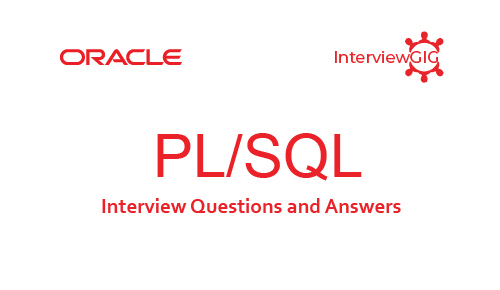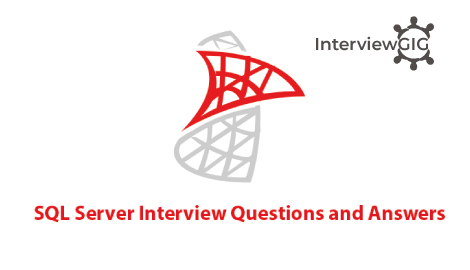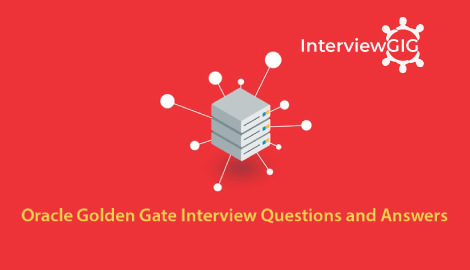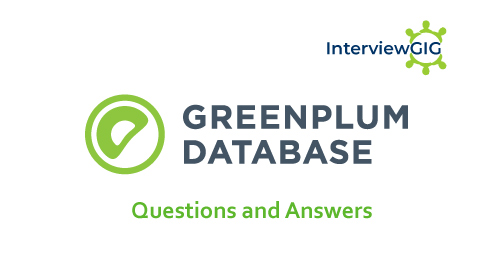Discuss the significances of JDBC?
The significances are given below:
- JDBC is the acronym stands for Java Database Connectivity.
- Java Database Connectivity (JDBC) is a standard Java API.
- Its purpose is to interact with the relational databases in Java.
- JDBC is having a set of classes & interfaces which can be used from any Java application.
- By using the Database Specific JDBC drivers, it interacts with a database without the applications of RDBMS.
Name the new features added in JDBC 4.0?
The major features introduced in JDBC 4.0 are
- Auto-loading by JDBC driver class.
- Enhanced Connection management
- RowId SQL enabled.
- DataSet implemented by SQL by using Annotations
- Enhancements of SQL exception handling
- Supporting SQL XML files.
How do Java applications access the database using JDBC?
Java applications access the database using JDBC by:
- Communicating with the database for Loading the RDBMS specific JDBC driver
- Opening the connection with database
- Sending the SQL statements and get the results back.
- Creating JDBC Statement object which contains SQL query.
- Executing statement to return the resultset(s) containing the tuples of database table which is a result of SQL query.
- Processing the result set.
- Closing the connection.
Briefly tell about the JDBC Architecture?
The JDBC Architecture consists of two layers:
- The JDBC API
- The JDBC Driver API
- The JDBC API provides the application-JDBC Manager connection.
- The JDBC Driver API supports the JDBC Manager-to-Driver Connection.
- The JDBC API interacts with a driver manager, database-specific driver for providing transparent connectivity for the heterogeneous databases.
- The JDBC driver manager authenticates that the correct driver has been used to access each data source.
- The driver manager supports multiple concurrent drivers connected to the multiple heterogeneous databases.
Explain the life cycle of JDBC?
The life cycle for a servlet comprises of the following phases
- DriverManager: for managing a list of database drivers.
- Driver: for communicating with the database.
- Connection: for interfacing with all the methods for connecting a database.
- Statement: for encapsulating an SQL statement for passing to the database which had been parsed, compiled, planned and executed.
- ResultSet: for representing a set of rows retrieved for the query execution.
Describe how the JDBC application works?
A JDBC application may be divided into two layers:
- Driver layer
- Application layer
- The Driver layer consists of DriverManager class & the JDBC drivers.
- The Application layer begins after putting a request to the DriverManager for the connection.
- An appropriate driver is chosen and used for establishing the connection.
- This connection is linked to the application layer.
- The application needs the connection for creating the Statement kind of objects by which the results are obtained.
How a database driver can be loaded with JDBC 4.0 / Java 6?
By providing the JAR file, the driver must be properly configured.
- The JAR file is placed in the classpath.
- It is not necessary to explicitly load the JDBC drivers by using the code like Class.forName() to register in the JDBC driver.
- The DriverManager class looks after this, via locating a suitable driver at the time when the DriverManager.getConnection() method is called.
- This feature provides backward-compatibility, so no change is needed in the existing JDBC code.
What does the JDBC Driver interface do?
- The JDBC Driver interface provides vendor-specific customized implementations of the abstract classes.
- It is provided normally by the JDBC API.
- For each vendor the driver provides implementations of the java.sql.Connection, PreparedStatement, Driver,Statement, ResultSet and CallableStatement.
What is represented by the connection object?
- The connection object represents the communication context.
- All the communication with the database is executed via the connection objects only.
- Connection objects are used as the main linking elements.
What is a Statement?
- The Statement acts just like a vehicle via which SQL commands are sent.
- By the connection objects, we create the Statement kind of objects.
Statement stmt = conn.createStatement();
- This method returns the object, which implements the Statement interface.
Define PreparedStatement
- A Preparedstatement is an SQL statement which is precompiled by the database.
- By precompilation, the prepared statements improve the performance of the SQL commands that are executed multiple times (given that the database supports prepared statements).
- After compilation, prepared statements may be customized before every execution by the alteration of predefined SQL parameters.
Code:
PreparedStatement pstmt = conn.prepareStatement(“UPDATE data= ? WHERE vl = ?”);
pstmt.setBigDecimal(1, 1200.00);
pstmt.setInt(2, 192);
Differentiate between a Statement and a PreparedStatement
- A standard Statement is used for creating a Java representation for a literal SQL statement and for executing it on the database.
- A PreparedStatement is a precompiled Statement.
- A Statement has to verify its metadata in the database every time.
- But ,the prepared statement has to verify its metadata in the database only once.
- If we execute the SQL statement, it will go to the STATEMENT.
- But, if we want to execute a single SQL statement for the multiple number of times, it’ll go to the PreparedStatement.
What is the function of setAutoCommit?
- When a connection is created, it is in auto-commit mode.
- This means that each individual SQL statement is to be treated as a single transaction.
- The setAutoCommit will be automatically committed just after getting executed.
- The way by which two or more statements are clubbed into a transaction to disable the auto-commit mode is:
con.setAutoCommit (false);
- Once auto-commit mode is disabled, no SQL statements will be committed until we call the method ‘commit’ explicitly.
Code:
con.setAutoCommit(false);
PreparedStatement updateSales = con.prepareStatement( “UPDATE COFFEE SALES = ? WHERE COF_NAME LIKE ?”);
updateSales.setInt(1, 50); updateSales.setString(2, “Colombian”);
updateSales.executeUpdate();
PreparedStatement updateTotal =
con.prepareStatement(“UPDATE COFFEES SET TOTAL = TOTAL + ? WHERE COF_NAME LIKE ?”);
updateTotal.setInt(1, 50);
updateTotal.setString(2, “Colombian”);
updateTotal.executeUpdate();
con.commit();
con.setAutoCommit(true);
How do we call a stored procedure from JDBC?
- The foremost step is to create a CallableStatement object.
- With the Statement and PreparedStatement object ,it is done with an open Connection object.
- A CallableStatement object contains a call to a stored procedure.
Code:
CallableStatement cs = con.prepareCall(“{call SHOW_Sales}”);
ResultSet rs = cs.executeQuery();
What is SQLWarning and discuss the procedure of retrieving warnings?
- SQLWarning objects, a subclass of SQLException is responsible for the database access warnings.
- Warnings will not stop the execution of an specific application, as exceptions do.
- It simply alerts the user that something did not happen as planned.
- A warning may be reported on the Connection object, the Statement object (including PreparedStatement and CallableStatement objects) or on the ResultSet object.
- Each of these classes has a getWarnings method, which you must invoke in order to see the first warning reported on the calling object:
Code :
SQLWarning waring = stmt.getWarnings();
if (warning != null)
{
System.out.println(“n—Warning—n”);
while (warning != null)
{
System.out.println(“Message: ” + warning.getMessage());
System.out.println(“SQLState: ” + warning.getSQLState());
System.out.println(“Vendor error code: “);
System.out.println(warning.getErrorCode());
System.out.println(“”);
warning = warning.getNextWarning();
}
}
Explain the types of JDBC Drivers and name them
The 4 types of JDBC Drivers are:
- Pure Java Driver JDBC Net
- Bridge Driver JDBC-ODBC
- Network protocol Driver
- Partly Java Driver Native API
How can we move the cursor in a scrollable result set?
- The new features added in the JDBC 2.0 API are able to move a resultset’s cursor backward & forward also.
- There are some methods that let you direct the cursor to a particular row and checking the position of the cursor.
Code:
Statement stmt = con.createStatement(ResultSet.TYPE_SCROLL_SENSITIVE,
ResultSet.CONCUR_READ_ONLY);
ResultSet srs = stmt.executeQuery(”SELECT COF_NAME, Sale _COFFEE”);
Three constants can be added to the Result Set API for indicating the kind of the Result Set object. The constants are:
– TYPE_FORWARD_ONLY
– TYPE_SCROLL_INSENSITIVE
– TYPE_SCROLL_SENSITIVE.
The Result Set constants for specifying whether a result set is read-only or updatable are:
– CONCUR_READ_ONLY
– CONCUR_UPDATABLE.
How do we load the drivers?
- To Load the driver or drivers we need to use a very simple one line of code.
- If we want to use the JDBC/ODBC Bridge driver, the following code will load it:
Class.forName(”sun.jdbc.odbc.JdbcOdbcDriver”);
- The driver documentation gives the class name to use.
For example, if the class name is jdbc.DriverXYZ, we can load the driver using the below line of code:
Code:
Class.forName(”jdbc.DriverXYZ”);
What Class.forName does, while loading the drivers?
- It is used for creating an instance of a driver
- It is used for registering with theDriverManager.
- When we have loaded a driver, it connects with the DBMS.
How can you make a connection?
- To establish a connection we need to have an appropriate driver, connected to the DBMS.
- The below line of code illustrates the idea:
Code:
String url = “jdbc:odbc: rima”;
Connection con = DriverManager.getConnection(url, “rima”, “J8?);




